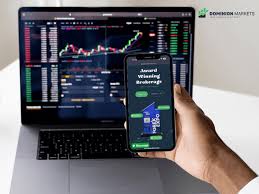
Introduction to Automatic Forex Trading
In today’s fast-paced financial landscape, many investors are increasingly turning to automatic forex trading to capitalize on the ever-fluctuating currency market. Automatic forex trading, also known as algorithmic or automated trading, involves the use of advanced computer programs to execute trades on behalf of the investor. This approach to trading offers numerous advantages such as speed, efficiency, and the potential for higher returns with less emotional decision-making. For those eager to dive into the world of automatic forex trading, platforms like automatic forex trading latam-webtrading.com provide comprehensive tools and resources to facilitate this process.
Understanding Forex Trading
Forex trading involves the exchange of one currency for another in the global marketplace. The forex market is among the largest and most liquid financial markets in the world, with a daily trading volume exceeding $6 trillion. Traders speculate on the future value of currency pairs such as EUR/USD, USD/JPY, and GBP/USD by simultaneously buying one currency and selling another. While traditional forex trading requires significant skill, knowledge, and emotional resilience, automatic trading systems aim to simplify these processes.
How Automatic Forex Trading Works
Automatic forex trading employs algorithms and trading bots that generate signals based on predefined criteria, market conditions, and technical analysis. These programs execute trades without human intervention, allowing for quick reactions to market changes. Here’s a breakdown of how this system generally works:
- Algorithm Development: Traders program algorithms to identify profitable trading opportunities based on historical data and real-time market analysis.
- Backtesting: Traders test these algorithms against historical data to evaluate performance and make necessary adjustments.
- Execution: Once refined, the algorithm operates in real-time, placing trades automatically based on the criteria set by the trader.
- Monitoring: While automatic trading reduces the need for constant monitoring, traders should still review performance and make necessary adjustments over time.
Advantages of Automatic Forex Trading
Automatic forex trading offers several advantages over manual trading, including:
- Speed of Execution: Automated systems can process transactions at a speed that is impossible for a human trader, enabling them to capitalize on price movements as they occur.
- Elimination of Emotional Trading: Automated systems operate based solely on data and predetermined parameters, reducing the impact of emotional decision-making that can lead to trading mistakes.
- Backtesting Capabilities: Traders can backtest their algorithms on historical data, allowing them to assess their strategies and optimize performance before deploying them in live markets.
- Diversification: Automated trading can manage multiple accounts or strategies simultaneously, helping to spread risk across different currency pairs and market conditions.
- Consistent Trading: Algorithms can follow a predetermined trading strategy without deviation, helping to maintain consistency and discipline in trading decisions.

Risks Associated with Automatic Forex Trading
Despite its many advantages, automatic forex trading is not without risks. Some potential pitfalls include:
- Technical Failures: System outages or software bugs can lead to unintended losses. It’s critical for traders to ensure their systems are well-maintained and regularly monitored.
- Market Volatility: Unexpected market movements can significantly impact trading performance. Automated systems may not always react appropriately to sudden changes.
- Over-Optimization: Traders may fall into the trap of over-optimizing their algorithms based on historical data, leading to poor performance in live conditions.
- Limited Adaptability: Automatic trading systems may struggle to adapt to new market patterns or economic events not accounted for in their programming.
Choosing the Right Automated Trading Platform
Selecting the right platform for automatic forex trading is a crucial step in ensuring success. When evaluating platforms, consider the following factors:
- User Interface: The platform should have a user-friendly interface that allows you to easily navigate and manage your trades.
- Performance Metrics: Look for platforms that provide detailed performance metrics to gauge the effectiveness of your algorithms.
- Securities Offered: Ensure the platform offers a wide range of currency pairs, allowing you to diversify your trading opportunities.
- Customer Support: Reliable customer support is essential for resolving issues quickly and effectively.
- Regulatory Compliance: Choose platforms that are regulated and have a good reputation in the market to ensure the safety of your investments.
Strategies for Successful Automatic Forex Trading
While automatic forex trading systems can operate independently, employing effective strategies remains vital for success. Here are some strategies to enhance overall performance:
- Trend Following: Develop algorithms that identify and capitalize on the prevailing market trends, executing trades that align with upward or downward movements.
- Arbitrage: Utilize algorithms to exploit price discrepancies in different markets or platforms for the same currency pair.
- Mean Reversion: Create systems that identify potential price reversals based on historical averages, maximizing trades at high and low price points.
- Risk Management: Implement strict risk management protocols within your algorithms to protect against significant losses and preserve capital.
Conclusion
Automatic forex trading is transforming the investment landscape, providing traders with tools that enhance efficiency, speed, and profitability. While there are risks to consider, the potential for improved trading performance through algorithmic trading is substantial. As technology continues to evolve, future advancements in automatic trading will likely further integrate artificial intelligence and machine learning, making these systems even more robust and versatile. For any trader looking to harness the power of automatic trading, platforms like latam-webtrading.com offer valuable resources to get started on this journey.
